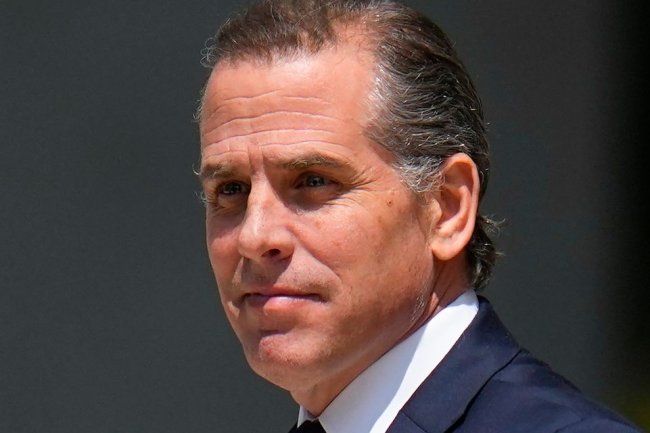Iran Begins Two-Day Shutdown as Heat Wave Worsens
Climate change poses specific security challenges for the Islamic Republic, which has faced unrest over water shortages Many residents of Tehran are staying home as temperatures in Iran soar. Photo: WANA NEWS AGENCY/via REUTERS By Sune Engel Rasmussen and Aresu Eqbali Aug. 2, 2023 2:11 pm ET TEHRAN—Neighborhoods across Tehran fell quiet Wednesday as temperatures surpassing 100 degrees Fahrenheit bore down on Iran’s capital. Many residents stayed home after the government declared an emergency two-day shutdown, closing banks, exchange shops and government offices and calling on private businesses to follow suit. Toward the north, roads leading out of the city to cooler regions were clogged with people seeking relief from the heat. The national holiday, announced Tuesday


Many residents of Tehran are staying home as temperatures in Iran soar.
Photo: WANA NEWS AGENCY/via REUTERS
TEHRAN—Neighborhoods across Tehran fell quiet Wednesday as temperatures surpassing 100 degrees Fahrenheit bore down on Iran’s capital.
Many residents stayed home after the government declared an emergency two-day shutdown, closing banks, exchange shops and government offices and calling on private businesses to follow suit. Toward the north, roads leading out of the city to cooler regions were clogged with people seeking relief from the heat.
The national holiday, announced Tuesday, was an unusual response to the increasingly frequent heat waves hitting the country, which in the south have pushed temperatures above 120 degrees Fahrenheit.
The health ministry advised children, the elderly and those with underlying health conditions to stay indoors. Other government departments pleaded with people to consume less electricity and refrain from using power-hungry devices except in the morning and late at night to ensure there was enough power to go around for Iran’s nearly 90 million people.

Temperatures in Tehran rose above 100 degrees Fahrenheit on Wednesday.
Photo: WANA NEWS AGENCY/via REUTERS
Residents with holiday homes in the hills north of the capital and along the Caspian Sea bundled into cars as early as Tuesday evening after the two-day special holiday was announced. Grocery stores, restaurants and shopping malls largely stayed open, though traffic within the capital was noticeably thinner than usual.
In a region scorched by global warming, Iran is particularly vulnerable to the effects of climate change. It is dominated by an arid and semiarid climate, marked by low rain and snowfall.
While U.S. sanctions to some extent hamper Iran’s ability to mitigate the impact of global warming, successive governments have failed to invest in climate-friendly initiatives such as solar energy or more efficient agricultural technology. In the winter, when a lid of cold air captures the smog, the capital of Tehran is enveloped in a yellow haze emanating from antiquated cars belching exhaust from low-quality fuel.
Iranian authorities have warned that the western lake of Urmia, which was once the Middle East’s largest lake but has been shrinking since the mid-1990s, is at risk of fully drying up if dam construction and other agricultural projects aren’t halted. The Iranian government has dug a 20-mile tunnel to transfer water into the lake from a nearby basin.
Iran faces a conundrum, however, with dams and irrigation projects vital to assisting a struggling agricultural sector that already has lost billions of dollars to the shocks of climate change. In a climate zone like Iran’s, each one-degree increase in temperature can reduce crop production by 10%, according to the United Nations, worsening food security when the war in Ukraine is already badly disrupting global grain markets.
The rest of Iran’s economy—hampered by U.S. sanctions—is ill-equipped to adapt. In the year to March 2022, power outages cost the country $7 billion to $8 billion in non-oil exports, according to the country’s chamber of commerce, industries, mines and agriculture.
This year’s temperature surge, with July logged as the warmest month on record, has brought pain across the Middle East.
Iraq last year introduced prolonged national holidays to protect employees from the scorching heat. Temperatures there were this week expected to surpass 120 degrees Fahrenheit in large parts of the country, amplifying pressure on the country’s ailing electricity grid.
Iraq partly depends on gas imports from Iran for its electricity, but has struggled to pay for them due to U.S. sanctions on Tehran. As debts built up, Iran in June cut gas supplies to Iraq, plunging its neighbor into blackouts and power shortages just as the scorching summer heat set in. The government in Baghdad last month announced a new barter arrangement, in which Iraq would pay for Iranian gas with oil, testing the resolve of the U.S. to enforce its sanctions.
Egypt last month introduced scheduled, rolling power cuts to relieve pressure on the nation’s power grid, saying the cuts would last no more than two hours a day at times of surging energy consumption, and warned the population against using elevators at certain times of the day. The government also told most civil servants to work remotely once a week beginning this Sunday, and encouraged private companies to take similar steps.
In Lebanon, the effect of sweltering temperatures has been compounded by longstanding electricity rationing. The government grid supplies only a few hours of electricity a day, making residents living through a severe economic crisis dependent on private generators to cool down. The country has also been plagued by wildfires in recent weeks.
Iranian authorities, though, are especially sensitive to the security challenges posed by climate change. In recent years the government has faced simmering unrest over water shortages, caused by a combination of drought and government mismanagement. People have protested particularly in the restive and arid southeastern part of the country, but also in the dried-up bed of an iconic river in the central city of Isfahan.

A man rested in a closed store in Zanjan, Iran, on Tuesday.
Photo: Rouzbeh Fouladi/ZUMA Press
Sistan-Baluchistan, a border region near Afghanistan and Pakistan, is a source of particular concern. It is home to a Sunni Muslim ethnic minority with a history of hostility to the central government in Tehran, and was a driving force in a range of protests that swept the country last year. Baluch communities are increasingly short on drinking water, and on Monday, hundreds of residents protested in the streets.
At the heart of the protests is a decadeslong water conflict with neighboring Afghanistan.
According to a 1973 treaty, the two countries share water from the Helmand River flowing from the Hindu Kush mountains in the central Afghan highlands. Iranian authorities have for years accused the Afghan government, now controlled by the Taliban, of providing less than its fair share of water, a charge Afghanistan denies. The head of Iran’s department of environment on Wednesday said Afghanistan had provided Iran with less than 2% of the water it was entitled to.
Before the Taliban takeover of Afghanistan, the U.S.-backed government of Ashraf Ghani invested tens of millions of dollars into dam projects that divert water from the Helmand River to irrigate Afghan farmlands.
Iranian President Ebrahim Raisi in May warned the Taliban not to violate the water rights of the Iranian people, and called on the Taliban to allow Iranian hydrologists to check the water levels of the Helmand River to ensure Iran wasn’t cheated of its share. Days later, deadly clashes broke out on the border, killing two Iranian security officers and a Taliban border guard.
The Taliban have continued to operate the dams.
The Iranian government, meanwhile, warned people that further shutdowns were possible if the heat continued.
The Iranian minister of interior, Ahmad Vahidi, said the government was willing to call another public holiday in the future if health authorities thought it was needed to save lives.
“We hope it won’t be necessary to shut down the country,” he said, according to state media.
Write to Sune Engel Rasmussen at [email protected]
What's Your Reaction?






















